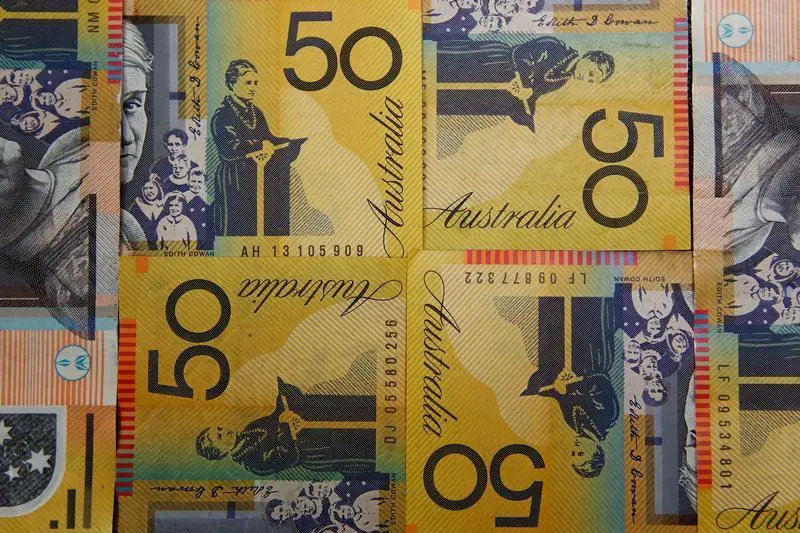PHOTO
The Australian and New Zealand dollars hit fresh four-month highs on Monday as markets wagered on early and aggressive rate cuts in U.S., while all eyes were on the outcome of a policy meeting in Australia this week.
The Aussie touched a four-month high of $0.6690, after rallying 1.4% last week in the third straight week of gains. The currency climbed 4.2% in November and has support at the 200-day moving average of $0.6580.
The kiwi hit $0.6222, also a four-month high, having gained 2.1% last week. It climbed 5.7% in November, guided higher by a surprisingly hawkish Reserve Bank of New Zealand as it forecast rate hikes were not over.
The Antipodeans' winning streak was stoked by wagers the next move by the Federal Reserve will be to lower rates, with Fed Chair Jerome Powell on Friday declining the opportunity to push back hard against aggressive market pricing for cuts.
Futures now imply a 71% chance the Fed will ease as soon as March, up from 21% a week ago, and are pricing in about 125 basis points of cuts for all of 2024.
Down Under, investors see fewer rate cuts for the Reserve Bank of Australia, which has hiked interest rates by less than its overseas counterparts. The central bank is widely expected to hold rates steady on Tuesday, but signs are emerging that the current policy rate might not be restrictive enough.
Data released on Monday showed that inventories likely added 0.9 percentage points to economic growth in the third quarter, suggesting economic resilience, while housing loans also beat expectations and rose by a robust 5.4% in October.
Saxo Asia Pacific market strategist Charu Chanana expects the RBA meeting on Tuesday could follow what the RBNZ did last week, with a hawkish hold that could push the Aussie higher.
"However, with the AUD, there's currently risk from what's happening in China... but I'd say policy is acting as a bigger driver for (AUD) right now, which is not always the case," Chanana said.
Indeed, rate differentials are likely to move sharply in the Aussie's favour over 2024. Australian yields are already trading above U.S. Treasuries, with the spread widening to more than 20 basis points on Monday. (Reporting by Stella Qiu; Editing by Jamie Freed)





















